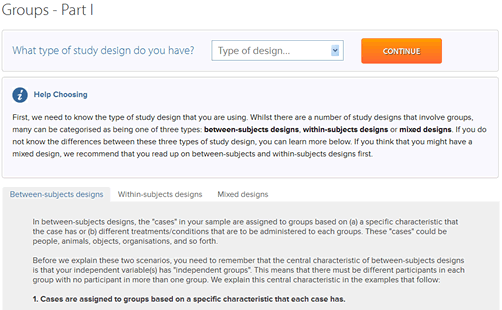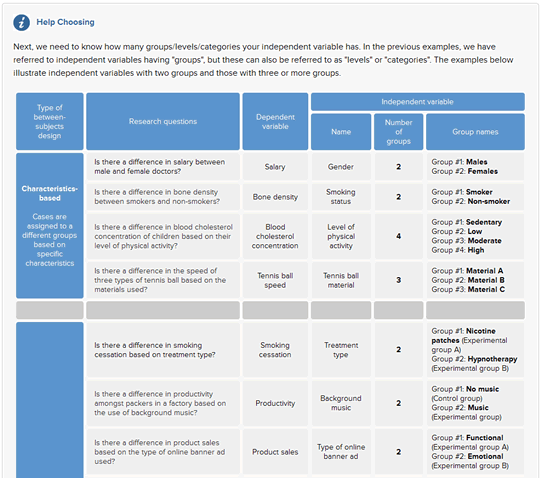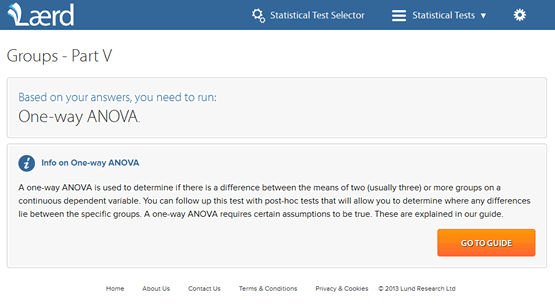Make sure you're using the correct statistical tests to analyse your data.
It is common for students and researchers to collect good data, but report the wrong findings because they selected the incorrect statistical tests to analyse their data with. The aim of our Statistical Test Selector is to help you avoid making such mistakes. Designed to help you select the correct statistical tests for a wide range of study designs, our Statistical Test Selector guides you through the process, assuming you have little or no knowledge of study designs or statistics.

Love the guides I have read so far - very clear and easy to understand. Thanks!Claire, USA
I have a kind of phobia with SPSS[,] so when I first go through Laerd, I was excited, but still sceptical about it. However, after reading through the guidance and the notes, I was clear about my [statistical tests] and have found the most appropriate test now. Laerd is wonderful for a novice researcher like me. The explanation given is clear and very [user-]friendly.Siti, Malaysia
I am a doctoral student... I found this website layout easy to understand and helpful.Sarah, USA
Step-by-Step Instructions
Since we assume that you have little or no knowledge of study designs or statistics, we guide you through the test selection process step-by-step. This involves helping you select the most appropriate statistical tests based on your study design, the research questions/hypotheses you are trying to answer, and the characteristics of your data. We explain what these different study designs are, as well as other basic statistical terms that you will need to know along the way (e.g., types of variables and types of measurement).


Examples and Illustrations
Each step of the test selection process comes with plenty of explanation, lots of examples and illustrations. We have worked hard to eliminate as much technical jargon as possible, using straightforward language. We want you to be able to understand the choices you are making, and why the statistical tests you have selected are appropriate for your research.
The Correct Test
The correct statistical test to use not only depends on your study design, but also the characteristics of your data. Every statistical test has what are known as "assumptions" that must be met if the test can be used (see Assumptions). For example, the most appropriate test to use might be an independent-samples t-test, but if your data failed the assumptions for this test, you may have to use a Mann-Whitney U test instead. Therefore, we highlight the main statistical test you should carry out, but also an alternative, if there is one.
